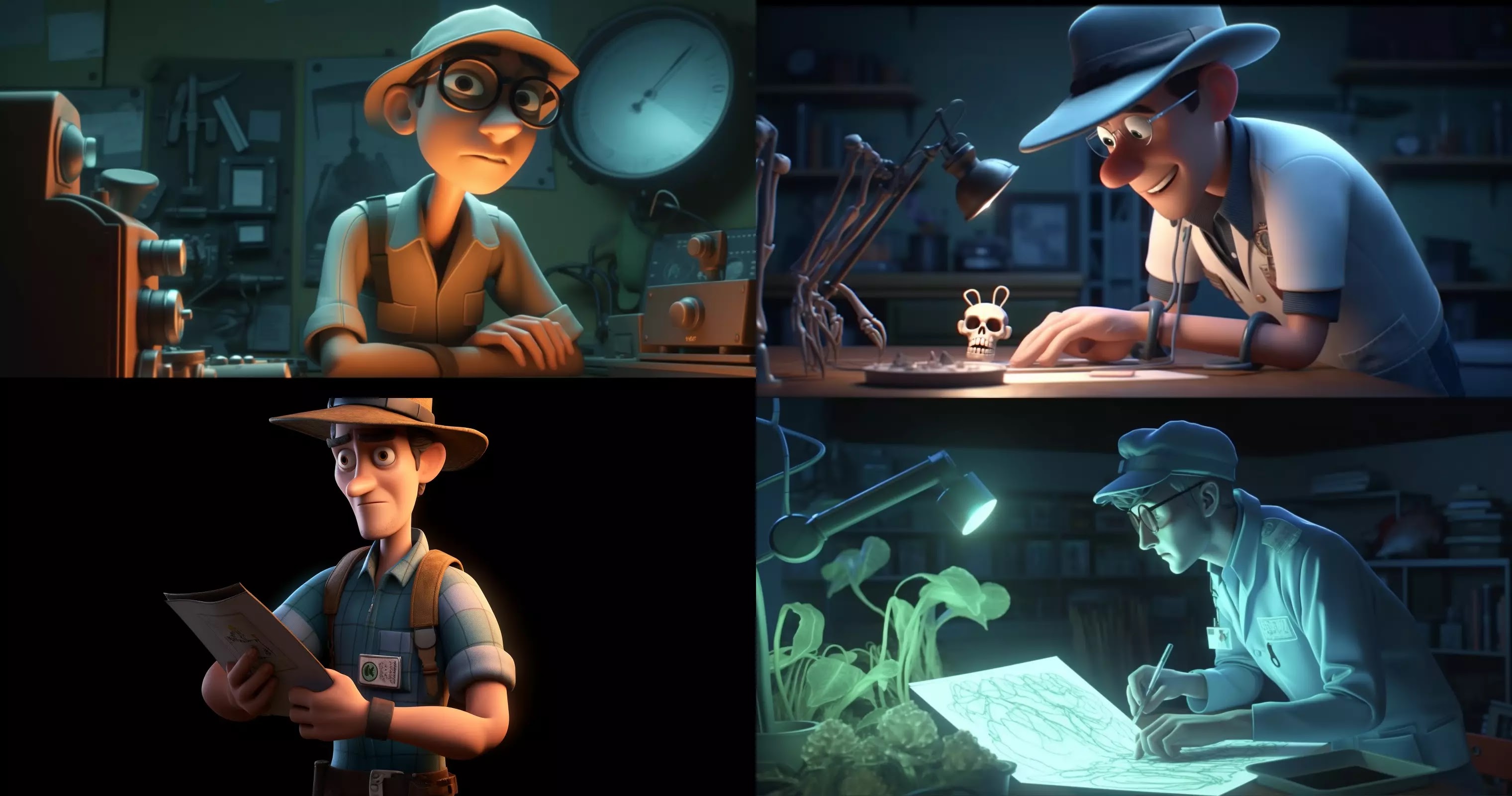Are you a research assistant searching for your next career opportunity? Do you want to stand out from the competition and showcase your skills and experience? In this comprehensive guide, we will walk you through the process of crafting a powerful research assistant cover letter that will leave other websites behind.
Whether you’re a seasoned professional or just starting out, this article will provide you with valuable insights, tips, and a sample cover letter template to help you land your dream job.
Quick Navigation:
Introduction
As a research assistant, your role is to gather and analyze information from various sources to support research projects. Just like how you meticulously extract data to craft compelling evidence, your cover letter acts as a powerful tool to showcase your skills, experience, and passion for your work. With the increasing competitiveness in the job market, it is essential to have a well-crafted cover letter that grabs the attention of hiring managers and sets you apart from other applicants.
In this article, we will guide you through the process of creating a research assistant cover letter that resonates with potential employers. We will provide you with valuable insights, step-by-step instructions, and a sample cover letter template to help you succeed in your job search. So, let’s dive in!
Understanding the Importance of a Research Assistant Cover Letter
A research assistant cover letter serves as your introduction to a potential employer. It is your chance to make a positive first impression and convince the hiring manager that you are the ideal candidate for the job. While your resume provides a summary of your skills and experience, the cover letter allows you to personalize your application and highlight specific qualifications that align with the position you are applying for.
By investing time and effort into crafting a well-written cover letter, you demonstrate your commitment, attention to detail, and communication skills—all essential qualities for a successful research assistant. Moreover, a strong cover letter can help you overcome any potential shortcomings in your resume and stand out among a sea of applicants.
Key Components of an Effective Research Assistant Cover Letter
To create a compelling cover letter, it is crucial to understand its key components and structure. Here are the essential elements that should be included in your research assistant cover letter:
a) Contact Information
Begin your cover letter with your contact information, including your full name, address, phone number, and email address. This information should be placed at the top of the page and aligned to the left margin.
b) Date
Beneath your contact information, include the date of writing the cover letter. It is essential to provide an updated date to indicate the timeliness of your application.
c) Salutation
Address the hiring manager or recipient of your cover letter with a professional salutation. If possible, try to find the name of the individual responsible for hiring to personalize your letter. If you are unsure about the recipient’s name, you can use a generic salutation such as “Dear Hiring Manager” or “Dear [Company Name] Team.”
d) Introduction
In the opening paragraph, clearly state the position you are applying for and express your interest in the company or organization. Grab the reader’s attention by mentioning something specific about the company that resonates with you. This shows your enthusiasm and dedication right from the start.
e) Body Paragraphs
The body of your cover letter should consist of two to three paragraphs where you highlight your relevant skills, experience, and accomplishments. This is your opportunity to demonstrate how your qualifications align with the requirements of the research assistant position. Use specific examples to showcase your expertise and emphasize your ability to contribute to the company’s goals.
f) Closing Paragraph
In the final paragraph, express your gratitude for the opportunity to apply and reiterate your interest in the position. Indicate your willingness to provide additional information or attend an interview if required. End the letter with a professional closing, such as “Sincerely” or “Thank you,” followed by your full name.
g) Signature and Enclosure
Leave a space for your signature and type your name below it. If you are submitting a physical copy of the cover letter, sign it in pen. If you are sending an electronic version, a typed name is sufficient. Mention any enclosures, such as your resume or any additional documents you are including with your application.
Now that you are familiar with the key components of a research assistant cover letter, let’s explore a sample cover letter template to help you structure your own.
4. Research Assistant Cover Letter Template
[Your Name]
[Your Address]
[City, State, ZIP Code]
[Phone Number]
[Email Address][Date]
[Recipient’s Name]
[Recipient’s Job Title]
[Company/Organization Name]
[Company Address]
[City, State, ZIP Code]Dear [Recipient’s Name],
[Opening paragraph: Introduce yourself, state the position you are applying for, and express your interest in the company or organization.]
[Body paragraphs: Highlight your relevant skills, experience, and accomplishments. Provide specific examples that demonstrate your qualifications and align them with the requirements of the research assistant position.]
[Closing paragraph: Express gratitude for the opportunity to apply, reiterate your interest in the position, and indicate your willingness to provide additional information or attend an interview if required.]
Thank you for considering my application. I look forward to the opportunity to contribute to your team and further the research efforts in [specific area or field]. Please find my enclosed resume for your review. I am available at your convenience for a personal interview.
Sincerely,
[Your Full Name]
Enclosure: Resume
Now that you have a solid understanding of the structure and components of a research assistant cover letter, let’s explore some tips and best practices to help you create a standout cover letter.
Tips for Writing a Standout Research Assistant Cover Letter
A well-crafted cover letter can significantly enhance your chances of securing a research assistant position. Follow these tips to ensure your cover letter stands out from the competition:
Tip 1: Tailor Your Cover Letter to the Job Description
Read the job description thoroughly and identify the key skills and qualifications the employer is seeking. Customize your cover letter to highlight the specific experiences and abilities that align with the requirements of the position. By demonstrating your fit for the role, you show the hiring manager that you have taken the time to understand their needs.
Tip 2: Showcase Your Research Skills and Experience
As a research assistant, your ability to gather and analyze information is vital. Use your cover letter to emphasize your research skills and experience, such as data collection, quantitative analysis, and results interpretation. Highlight any specific research methodologies or techniques you are proficient in, such as gene cloning, electrophoresis, or flow cytometry.
Tip 3: Demonstrate Your Passion for Research
Express your genuine enthusiasm and passion for research in your cover letter. Share any personal experiences or stories that inspired your interest in the field. Employers value candidates who are not only qualified but also deeply committed to the work they will be undertaking. Showcasing your passion will set you apart from other applicants.
Tip 4: Provide Concrete Examples
When describing your skills and accomplishments, provide specific examples to support your claims. Instead of simply stating that you have experience in a particular area, share tangible achievements that highlight your expertise. For example, mention a research project you contributed to or a publication you co-authored.
Tip 5: Keep it Concise and Error-Free
While it’s essential to showcase your qualifications, it’s equally important to keep your cover letter concise and error-free. Aim for a length of one page, using clear and concise language. Avoid unnecessary jargon or technical terms that the hiring manager may not be familiar with. Finally, proofread your cover letter thoroughly to ensure it is free of any grammatical or spelling errors.
By following these tips, you will be well-equipped to create a standout research assistant cover letter. To further assist you in your job search, we have prepared a sample cover letter that incorporates these best practices.
Sample Research Assistant Cover Letter
[Your Name]
[Your Address]
[City, State, ZIP Code]
[Phone Number]
[Email Address][Date]
[Dr./Prof./Ms./Mr. Last Name],
I am writing to apply for the research assistant position at [Company/Organization Name] advertised on [Source]. As an aspiring research assistant with a deep passion for [specific field or area], I was immediately drawn to the innovative research conducted at [Company/Organization Name]. I am eager to contribute my skills and knowledge to ongoing projects in this specialty.
In my current role as a graduate research assistant at [University’s Research Center], I have gained valuable experience in [specific research area]. I have mastered various research techniques, including gene cloning, electrophoresis, and flow cytometry (FACS) technology. Through my contributions, I have received commendations for the quality of my research, particularly in data collection, quantitative analysis, and results interpretation.
My academic background includes a Bachelor’s degree in [Cellular and Molecular Biology] and an in-progress Master’s degree in the same field, which I am scheduled to complete this summer. I have also developed proficiency in programming languages such as Python and R, as well as data visualization tools like Tableau. These technical skills have further strengthened my ability to analyze complex research data and draw meaningful insights.
What sets me apart is my personal connection to the mission of [Company/Organization Name]. Having lost family members to [specific condition or disease], I am deeply committed to contributing to research efforts that will lead to a cure. I strongly resonate with [Company/Organization Name]’s dedication to advancing scientific knowledge and improving the lives of individuals affected by [specific condition or disease].
I am confident that my research experience, academic background, and dedication to the field make me an excellent fit for the research assistant position at [Company/Organization Name]. I would welcome the opportunity to discuss how my skills and qualifications align with your research objectives. Please find my enclosed resume for your review, and feel free to contact me at your convenience to schedule an interview.
Thank you for considering my application. I look forward to the possibility of joining your esteemed team and contributing to groundbreaking research in [specific field or area].
Sincerely,
[Your Full Name]
Enclosure: Resume
Conclusion
Crafting a compelling research assistant cover letter is an essential step in your job search journey. By following the guidelines and tips provided in this comprehensive guide, you can create a standout cover letter that showcases your skills, experience, and passion for research. Remember to tailor your cover letter to the specific job requirements, highlight your research skills and accomplishments, and keep your letter concise and error-free.
With a well-crafted cover letter, you will position yourself as a strong candidate for research assistant positions and increase your chances of securing your dream job. So, put your best foot forward, and let your cover letter act as your gateway to success!
Remember, a great cover letter is just one piece of the puzzle. To maximize your chances of landing a research assistant job, make sure to pair your cover letter with an impressive resume and prepare thoroughly for interviews. Good luck in your job search!

![25 Great Jobs that Work from Home or Anywhere [Remote work]](https://jobsmarketupdate.com/wp-content/uploads/2021/10/Great-Jobs-that-Work-from-Home.jpg)




